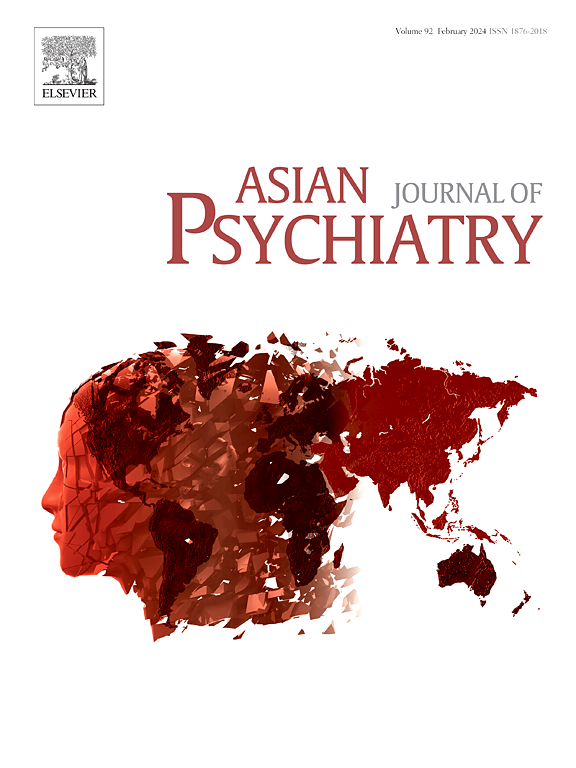Oral ketamine for rapid reduction of suicidal ideation in major depressive disorder: A midazolam-controlled randomized clinical trial
IF 3.8
4区 医学
Q1 PSYCHIATRY
引用次数: 0
Abstract
Background
The simplest, most convenient, and least expensive way to treat depressed and suicidal patients with ketamine is to administer racemic ketamine by the oral route. We describe the first active-controlled randomized clinical trial of oral racemic ketamine for suicidal ideation associated with depression.
Methods
Adult patients with major depressive disorder and expressed suicidal ideation were randomized to receive a single session of oral racemic ketamine (3 mg/kg; n = 40) or oral midazolam (0.3 mg/kg; n = 40). Suicidal ideation was rated using the Modified Scale for Suicidal Ideation (MSSI) and depression, using the 17-item Hamilton Rating Scale for Depression (HAM-D). Patients were assessed 4 h post-treatment (Day 1) and on Days 3 and 7.
Results
Mean doses were 180 mg and 1.8 mg for ketamine and midazolam, respectively. MSSI scores were significantly lower in the ketamine group at all assessment points: 4 h, Day 3, and Day 7. HAM-D scores were significantly lower in the ketamine group at 4 h and on Day 3. The study-defined HAM-D response and remission rates were 25 % vs 0 % and 5 % vs 0 % in ketamine vs midazolam groups on Day 7. Nausea/vomiting, lightness of body, emotional disturbance (anxiety or crying), and depersonalization/derealization were significantly more frequent in the ketamine group; however, no patient considered these to be of treatment-limiting severity.
Conclusions
Oral racemic ketamine is a reasonably well-tolerated and rapidly effective intervention for suicidal ideation and depression in adults with major depressive disorder.
求助全文
约1分钟内获得全文
求助全文
来源期刊

Asian journal of psychiatry
Medicine-Psychiatry and Mental Health
CiteScore
12.70
自引率
5.30%
发文量
297
审稿时长
35 days
期刊介绍:
The Asian Journal of Psychiatry serves as a comprehensive resource for psychiatrists, mental health clinicians, neurologists, physicians, mental health students, and policymakers. Its goal is to facilitate the exchange of research findings and clinical practices between Asia and the global community. The journal focuses on psychiatric research relevant to Asia, covering preclinical, clinical, service system, and policy development topics. It also highlights the socio-cultural diversity of the region in relation to mental health.
 求助内容:
求助内容: 应助结果提醒方式:
应助结果提醒方式:


